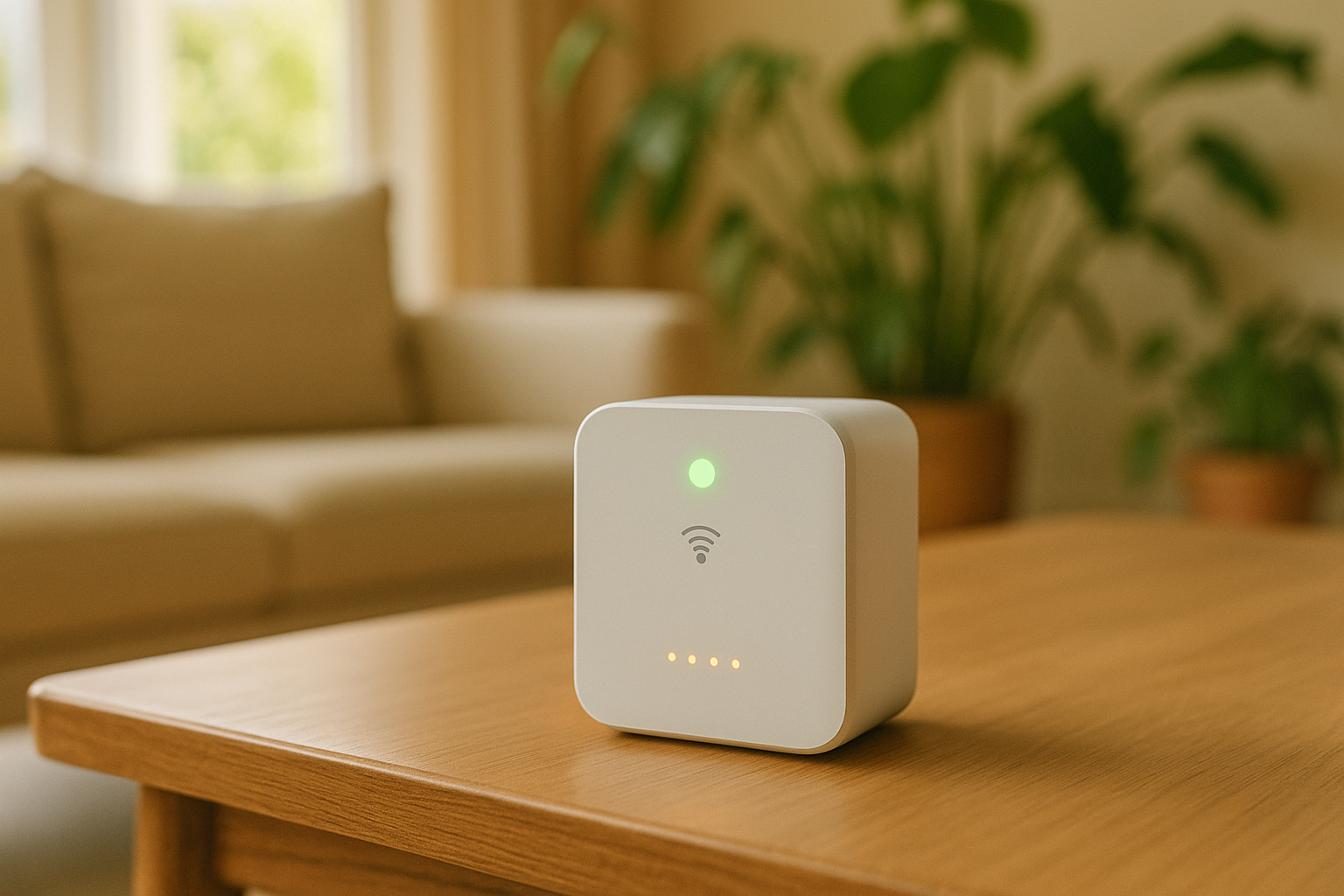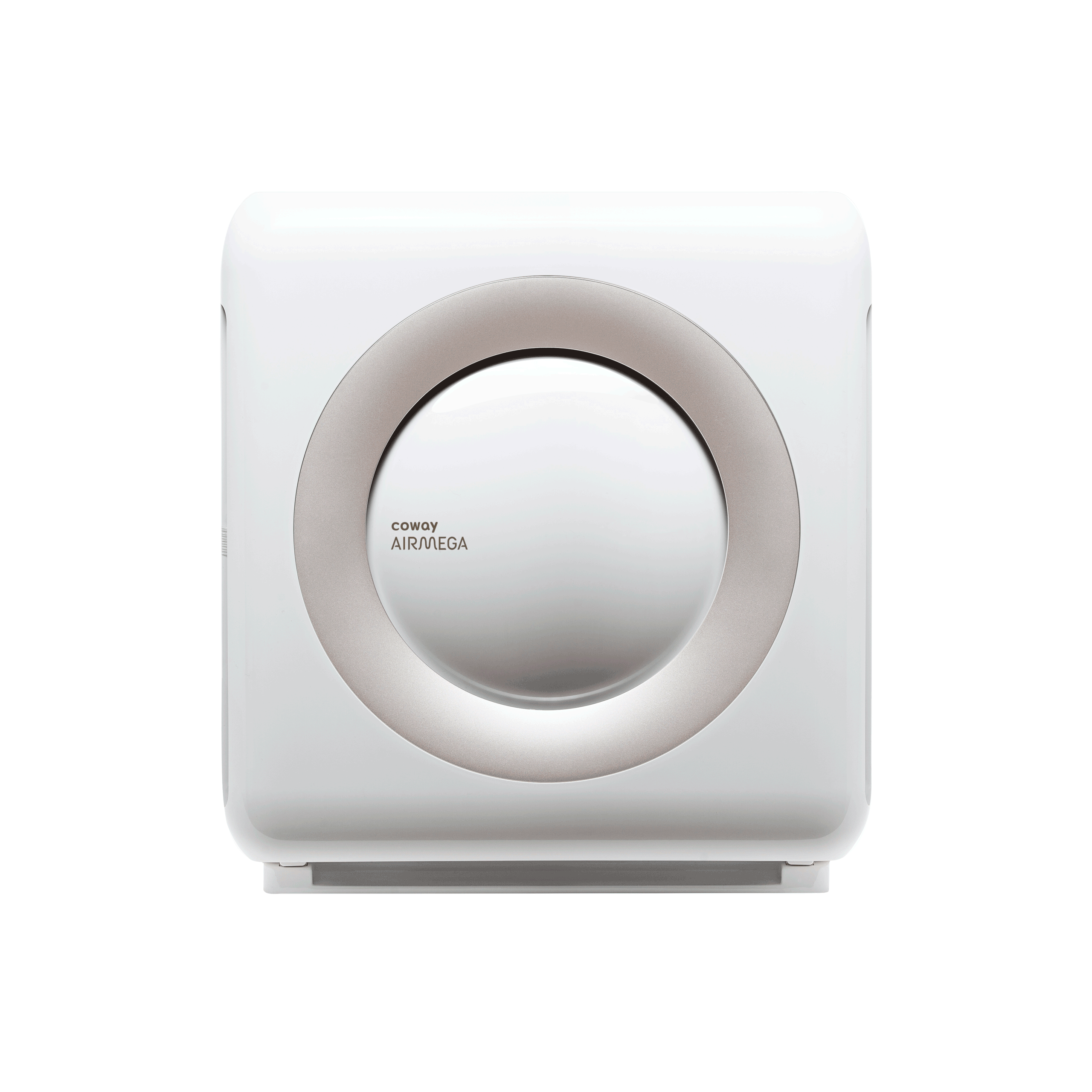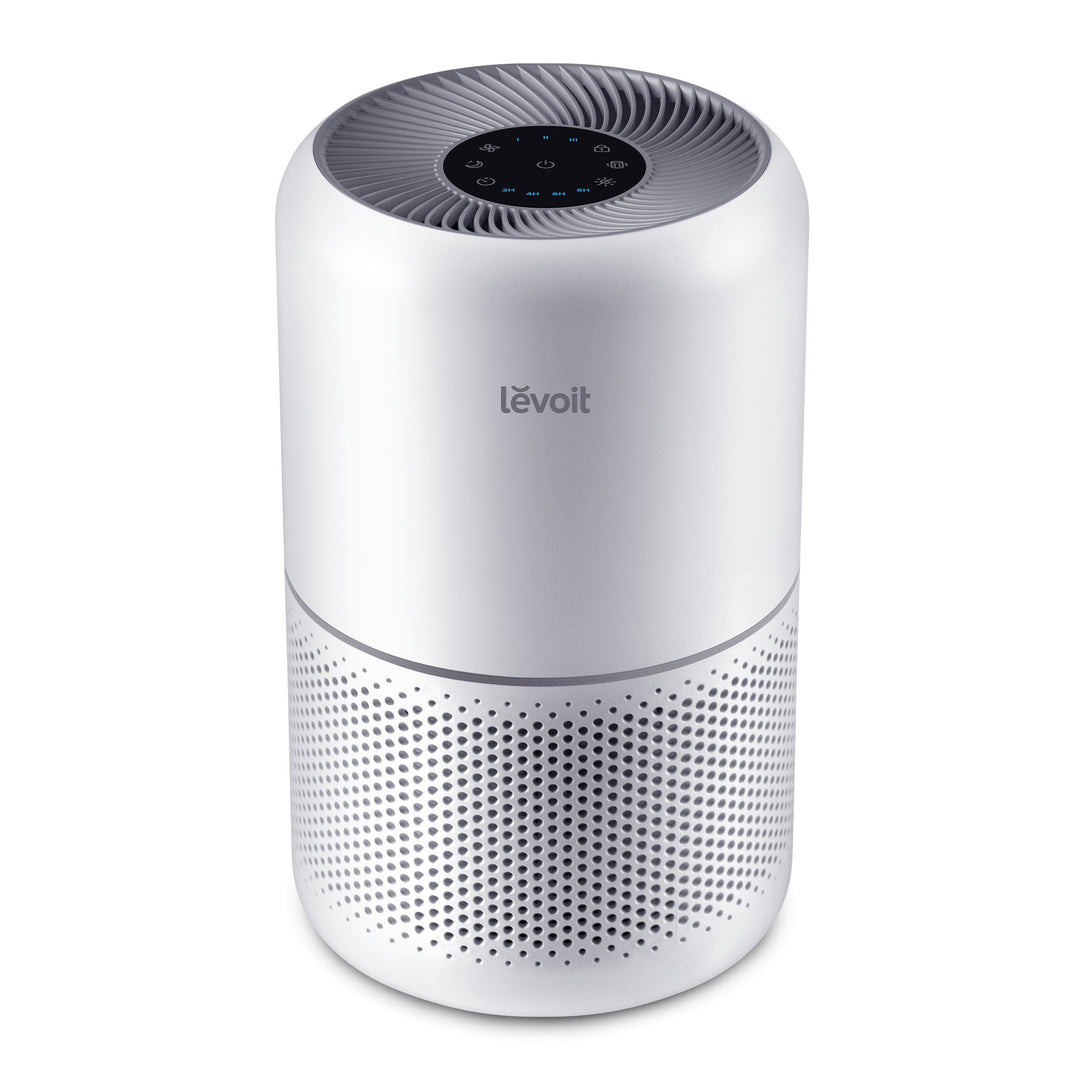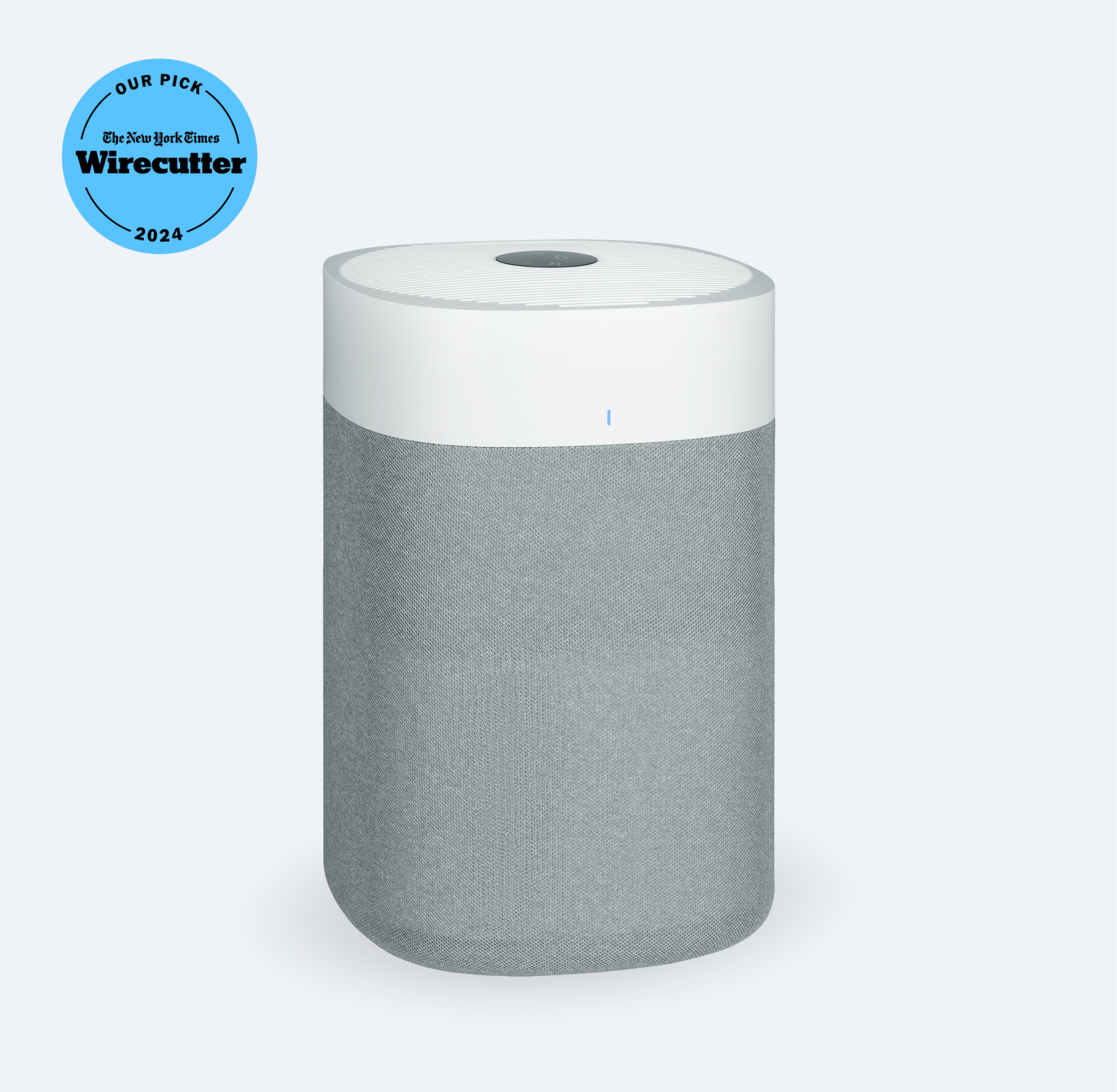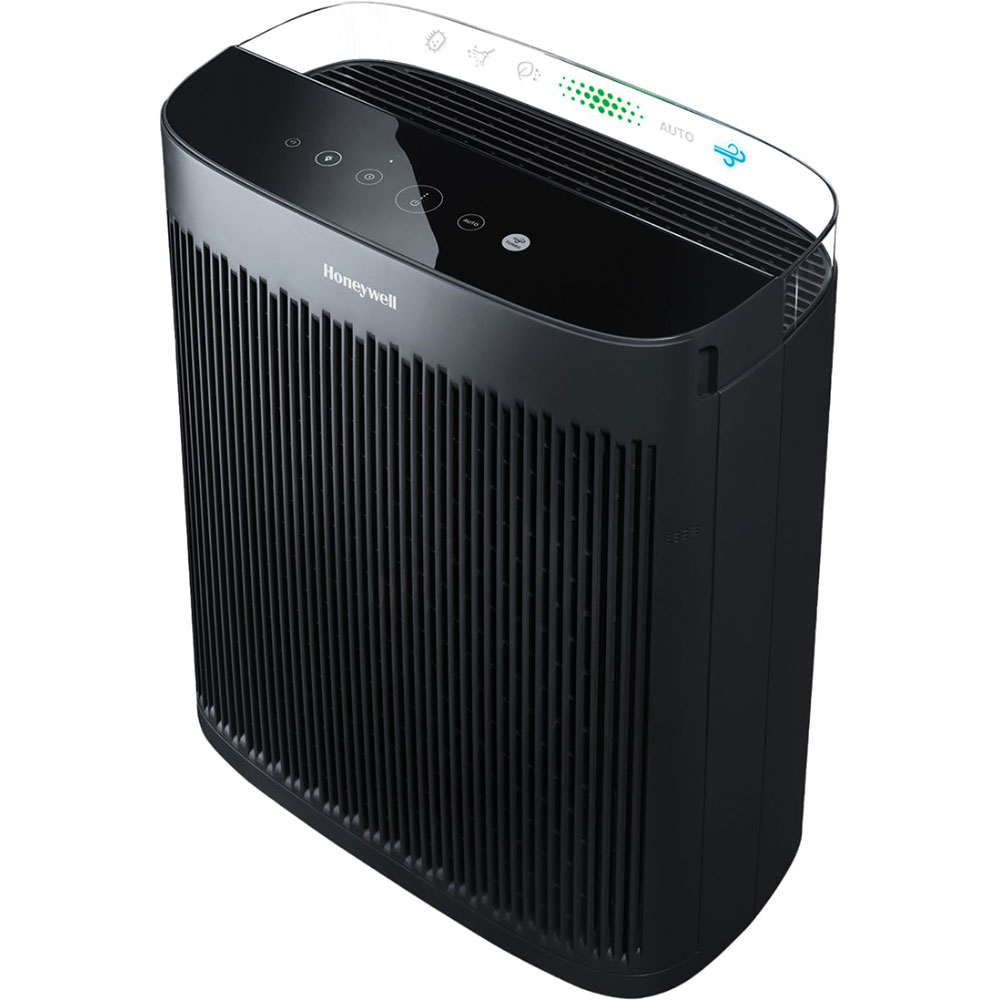Breathing clean air is essential, especially for people with respiratory conditions like COPD. Did you know indoor air can be 2–5 times more polluted than outdoor air? For the 16 million Americans living with COPD, this can worsen symptoms like wheezing and coughing. Portable air quality devices can help by reducing pollutants like dust, pollen, and smoke, improving breathing and overall health.
Here’s what you need to know about these devices:
- Portable Air Purifiers: Use HEPA filters to capture 99.97% of particles like dust and allergens. Look for models with a MERV rating of 12 or higher and avoid ozone-generating units.
- Portable Air Quality Monitors: Provide real-time data on air pollutants like PM2.5 and VOCs, helping you take action when air quality worsens.
- Additional Tools: Dehumidifiers, humidifiers, and personal air filtration masks can further improve air quality and reduce COPD triggers.
Key Features to Consider:
- Filtration Technology: HEPA filters for particles, activated carbon for odors and VOCs.
- Portability: Lightweight, travel-friendly designs for use at home or on the go.
- Ease of Use: Quiet operation, simple maintenance, and a suitable Clean Air Delivery Rate (CADR).
Using these devices properly - like placing purifiers in the right spot, maintaining filters, and monitoring air quality - can significantly improve indoor air and support better COPD management. Whether you’re at home or traveling, these tools can make a big difference in your respiratory health.
Best Portable Air Purifiers for Clean Breathing Anywhere!
Types of Portable Air Quality Devices
Choosing the right portable air quality devices can make a big difference in creating cleaner air, especially for those managing COPD symptoms. Let’s take a closer look at purifiers, monitors, and other tools that help safeguard the air you breathe.
Portable Air Purifiers
Portable air purifiers are a game-changer when it comes to improving indoor air quality. These devices use advanced filtration systems - like HEPA filters combined with activated carbon filters - to remove airborne particles, odors, and volatile organic compounds (VOCs) from everyday sources like cleaning products or cooking [4].
What makes them stand out is their portability. Unlike whole-house systems, you can move these units to the rooms you use the most, ensuring targeted air cleaning where it matters most. Many models are lightweight and compact, making them easy to take on trips for clean air wherever you go.
When shopping for one, look for a purifier with a MERV rating of at least 12. Also, steer clear of units that generate ozone, as ozone can irritate sensitive lungs [4]. Studies show that using indoor air filters can reduce symptoms, lower the need for rescue medications, and even decrease COPD flare-ups [4].
Portable Air Quality Monitors
Portable air quality monitors are your go-to devices for real-time updates on the pollutants around you. Equipped with sensors, these monitors can detect and measure contaminants like particulate matter (PM2.5 and PM10) and VOCs - both of which can aggravate COPD symptoms.
Unlike stationary monitoring stations, portable monitors give you a more immediate and personalized view of air quality [5]. Many models display readings on a digital screen or through connected apps, offering alerts when pollution levels rise.
Considering that air pollution is a major health risk - linked to around 1.9 million heart disease deaths and nearly a million strokes each year [5] - having this real-time data empowers you to take quick action, like avoiding outdoor exposure during pollution spikes.
Additional Tools for Better Air Quality
In addition to purifiers and monitors, other tools can help create a healthier breathing environment. Dehumidifiers, for instance, keep humidity levels below 50%, which helps prevent mold growth and reduces dust mites - two common COPD triggers [4].
On the flip side, during the winter months, humidifiers can add moisture to the air, helping to prevent dry nasal passages and lungs.
For extra protection in high-risk environments - like crowded public spaces or while traveling - personal air filtration masks are invaluable. They act as a barrier against pollutants, giving you peace of mind when air quality is less than ideal.
It’s important to note that while these tools can improve air quality, they aren’t a substitute for medical treatments. Instead, they work best as part of a broader COPD management strategy, complementing your prescribed treatment plan and lifestyle adjustments [4].
Key Features to Consider in Portable Air Quality Devices
Choosing the right portable air quality device can feel overwhelming, especially when managing COPD. But focusing on a few essential features can help you find a device that not only meets your needs but also fits seamlessly into your lifestyle. Here's what to keep in mind.
Filtration Technology
The heart of any air quality device is its filtration system. HEPA filters are a gold standard, capable of capturing 99.97% of particles as small as 0.3 microns. For even finer filtration, HyperHEPA filters go further, trapping particles as tiny as 0.003 microns [2]. These filters effectively tackle common COPD triggers like dust, pollen, pet dander, and bacteria.
To address odors and chemical irritants, look for devices with activated carbon filters. These are particularly useful if you're sensitive to cooking smells, cleaning product fumes, or other volatile organic compounds (VOCs) that can exacerbate symptoms [2].
Experts have shown that advanced filtration can significantly reduce the severity of COPD symptoms. For example, air cleaners equipped with HEPA and carbon filters have been found to cut indoor PM2.5 levels by 61% and NO₂ by 4% in homes of former smokers with COPD [6]. To maximize performance, ensure the device has a MERV rating between 11 and 13 [3] and is appropriately sized for the room you plan to use it in.
While filtration is the backbone of these devices, portability makes them practical for daily life.
Portability and Travel-Friendly Design
Portability is key if you’re frequently on the move. Compact, lightweight designs are ideal for travel, allowing you to maintain clean air wherever you go. Look for models that include extended battery life and convenient carrying features. Some devices even offer advanced connectivity options, making them easier to integrate into your routine [7].
Noise Levels and Maintenance
Comfort and ease of use are just as important as filtration. Devices with quiet or sleep modes let you enjoy clean air without disruptive noise, especially during rest periods.
Maintenance plays a big role in keeping your device running efficiently. Filters should be replaced as recommended by the manufacturer - this could range from every few months to once a year, depending on usage and local air conditions. Some devices include washable pre-filters, which can extend the life of the main filter and reduce overall maintenance costs.
Another factor to consider is the Clean Air Delivery Rate (CADR). This metric indicates how quickly a device can circulate clean air in a given space. Choose a model with a CADR rating suited to your room size, and use higher fan speeds when the space is occupied for added protection [8].
sbb-itb-3e96dba
How to Use Portable Air Quality Devices
Making the most of portable air quality devices comes down to where you place them, how you operate them, and staying on top of maintenance. Using these devices correctly ensures you get the best results, whether you're at home or on the go.
"Indoor air quality plays a crucial role in respiratory health. For individuals with COPD, reducing airborne pollutants and improving ventilation can significantly enhance breathing, lower symptom severity, and improve overall quality of life." - Lesley Williams, Registered Respiratory Therapist at Apria [11]
Best Practices for Home Use
Start by positioning your air purifier at least 3 feet away from walls, furniture, or anything that could block airflow [9]. Match the device to the room size by checking its Clean Air Delivery Rate (CADR). A purifier that’s too small won’t clean the air effectively, while an oversized one could be noisy and waste energy in a smaller space [9].
Once the device is running, keep windows and doors shut - especially on days when pollen is high or outdoor air quality is poor [9]. This helps maintain the clean air inside.
Adjust timing and fan settings for maximum efficiency. Run the purifier before, during, and after activities that release pollutants, like cooking or cleaning [9]. If your device has an "auto" mode, use it to let the purifier adjust based on air quality levels. Otherwise, set it to the highest fan speed you find comfortable.
Don’t forget regular maintenance. Replace filters as recommended by the manufacturer, typically every 3 to 12 months, depending on how often you use the device and the air conditions in your area [9]. Even if a filter looks clean, tiny particles can build up over time. Also, clean the exterior and air intake areas every few weeks to prevent dust from clogging the device [9].
The same principles apply when traveling, but with a few adjustments for different environments.
Travel Tips for Air Quality Devices
When you're on the move, you can still protect yourself from pollutants by planning and using portable air quality devices effectively. Start by checking the air quality at your destination using tools like aqicn.org [12]. This will help you decide what to pack and what precautions to take.
Choose accommodations wisely. Look for smoke-free and pet-free hotels with good ventilation systems [12]. If possible, request a room on a higher floor, away from street-level pollution or parking areas.
Bring compact air purifiers with long battery life for hotel rooms, rental cars, or other temporary spaces. Portable monitors like the Atmotube PRO can provide real-time air quality readings, helping you decide when extra measures are needed [12].
Don’t overlook transportation exposure. Studies show that car and bus commuters often face higher pollution levels compared to those who walk, bike, or use metro systems [12]. If you’re driving, use the recirculation mode in your car and consider a car air purifier for long trips.
In areas with poor air quality, take extra precautions like wearing an N95 mask when the Air Quality Index (AQI) exceeds 70–90. High levels of PM2.5 particles can impact lung function, so it’s better to stay protected [12].
Lastly, think about seasonal conditions when planning your travel. Air pollution often spikes during winter and spring, so keep that in mind when visiting areas known for poor air quality [12].
These tips are especially important for COPD patients who need to maintain good air quality even while traveling.
Monitoring and Adjusting Indoor Air Quality
Real-time air quality monitors can help you respond quickly to changes in pollutant levels [10]. To keep your monitor working accurately, calibrate it once a month, clean the sensors, and check the battery levels regularly [13]. Having spare batteries or using rechargeable devices can make this easier [13].
Use the data from your monitor to adjust your air purifier settings. If outdoor pollution levels are high, keep windows closed and rely more on your indoor devices.
Follow the manufacturer’s instructions to clean the sensors and store the monitor in a clean, dry spot when not in use [13][14]. Updating the device’s software can also help maintain its performance.
Consistency and proper care are key to getting the most out of portable air quality devices. When used as part of a broader approach to managing COPD, these tools can complement your treatments and lifestyle changes for better respiratory health.
Conclusion: Improving COPD Management with Portable Air Quality Devices
Portable air quality devices can play a crucial role in improving breathing and enhancing the quality of life for individuals with COPD. Research highlights that consistent use of HEPA air cleaners over six months can lead to reduced symptoms, better lung function, and less reliance on rescue medications [1]. Additionally, active air cleaners have been linked to a 61% reduction in indoor PM2.5 levels and a 24% drop in NO2 concentrations [15].
"Breathing clean air is important for everyone's health, but it is particularly vital for those with chronic lung diseases. Ensuring access to cleaner air can reduce respiratory symptoms and improve overall health outcomes."
- Jean Wright, MD, MBA, CEO of the COPD Foundation [16]
Managing indoor air quality is a key aspect of COPD care since it directly affects daily symptoms. Choosing the right tools - like a portable air purifier with HEPA filtration or a real-time air quality monitor - can make a significant difference. These devices, when combined with medications, lifestyle changes, and regular healthcare consultations, create a comprehensive approach to managing COPD.
Air purifiers work hand-in-hand with medical treatments and healthy habits, making it easier to manage COPD both at home and while traveling. Incorporating these tools into your routine can enhance your overall respiratory health strategy.
At COPD Essentials, we are dedicated to supporting your respiratory health. Explore our selection of air purifiers, pulse oximeters, and other devices designed specifically for COPD care to help you maintain cleaner air and better manage your condition.
FAQs
When picking a portable air purifier for COPD, prioritize models equipped with HEPA filters. These filters are designed to trap at least 99% of airborne particles, such as allergens, dust, and pollutants, which can worsen COPD symptoms. Steer clear of purifiers that produce ozone or rely on ionization, as they may pose risks for those with respiratory conditions.
Make sure the purifier is suitable for the size of your room and look for features like portability, quiet operation, and user-friendly controls. These qualities are especially important if you plan to take the purifier with you while traveling, helping to maintain consistent air quality and manage symptoms effectively whether you're at home or on the move.
A portable air quality monitor provides real-time data on pollutants such as particulate matter (PM2.5 and PM10) and volatile organic compounds (VOCs). This information can help you pinpoint sources of poor air quality and take steps to address them. For those living with COPD, it’s a valuable tool for managing environmental triggers and creating a more breathable space.
These devices also pair well with air purifiers, allowing you to track how well your purifier is performing and ensure your air stays clean. Some models even sync with smart purifiers to automatically adjust settings when pollutant levels spike. Together, they offer a hands-on way to keep your air cleaner and healthier, whether you’re at home or on the move.
Portable air quality devices, such as HEPA air purifiers, can play a role in improving indoor air quality and minimizing exposure to irritants, which may help alleviate symptoms for individuals with COPD. That said, it's crucial to remember that these devices are not a substitute for the medical treatments your doctor prescribes.
Instead, they work best as part of a broader COPD management strategy, alongside medications, therapies, and healthy lifestyle habits. Before making any changes to your treatment plan, always consult your healthcare provider to ensure it's the right choice for your condition.

